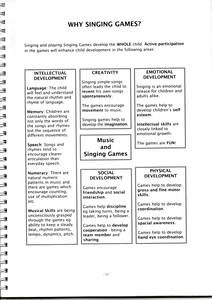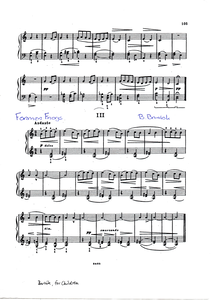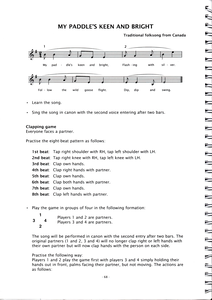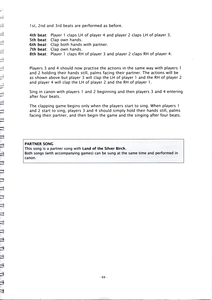How did the three chosen aspects become apparent during the CMM weekend held on 6 and 7 February 2016 at Scholen in de Kunst Amersfoort?
What is CMM?
CMM stands for Creative Music Making, an addition to existing methods in music education that brings the collaborative and creative aspects of learning to the forefront.
‘ Our children consider themselves too old to play as soon as they leave the kindergarten. We should not leave it at that. Let us encourage even the older ones: they should not be ashamed of enjoying. The longer the childhood, the more harmonious and joyful the adult’s life will be.’ Zoltán Kodály1
1 Singing
‘Teach music and singing in school in such a way that is not a torture but a joy for the pupil, instill a finer thirst for finer music in him, a thirst which will last for lifetime.’ Z. Kodály2
Singing ‘My paddle’s keen and bright’ 3(singing games and rhymes for ages 9 to 99, to the text as well as with solmisation .
Two-part singing (guided improviasation) with the help of hand signs.
Humming and singing with solmisation in ‘Former Friends’ from ‘For children’ by B. Bartok.
Dorian Melody (Hungarian folk tune) learned using solmisation.
The way in which the auditive preparation according to the Kodály method was gradually built up allowed participants to join the group at their own level. It seems singing in itself gives pleasure, given the cheerful atmosphere and the images the films show right from the start of the workshop. There was commitment to each other, concentration, interaction, and a willingness to take risks and make mistakes.
This is evident in the film clips…….
The participants, students, teachers and also the workshop leaders all mentioned pleasure, involvement and concentration.
One CMM workshop leader:
Q What did you think of these two days?
A First of all, it was a good experiment. Well organised and thought out. I always enjoy seeing and hearing adults and children doing things with music together.
Another CMM workshop leader reacted:
The chosen pieces (song and instrumental) provided both Dorian mode and rhythmic patterns, a bass line and melodies which the children could all sing. These elements then became the starting point and the building blocks for the CMM session.
One student:
-
Q What did you find particularly interesting during the workshops?
A The singing. I thought, we are going to do something quite different, but the clapping games in particular were really good fun.
Another student:
-
Q What did you think of the workshops?
A Really good! I learned a lot (for example the hand system for scales) and also getting to know the group better.
2 PPP principle
Learning ‘ My paddle’s keen and bright’ on the text was a Prepare session for learning about solmisation and hand signs. The next stage was to Present solmisation and hand signs and then do a Practice using hand signs for a two-part pentatonic guided improvisation. Walking the bass line of ‘Former Friends’ from Bartok’s ‘For children’ and humming the melody is the Prepare stage for singing using solmisation. Then we Present solmisation adding one new note (ti) to ‘My paddle’s keen and bright’
Then there is a Practice of solmisation by singing the Dorian melody (Hungarian folk tune), also in canon.
One of the CMM workshop leaders said:
I noticed that the Kodály lessons brought me more sharply into focus and made me cheerful. I got into learning mode. After a short while I was able to participate in the group in a way I had not thought possible. I could absorb the music in various ways and at different levels. It was important to experience this. Consciousness comes later on.
The next step – transferring this to your instrument – is a logical one. The Kodály Prepare stage gives the pupils the tools to hear and recognise the whole piece as well as their own part.
One student:
Q How would you describe this way of working and why?
A Relaxed, first warm up. So I can start to concentrate on making music.
Nice, it was nice to sing and to clap a rhythm. And then to think up a melody in groups. I only joined the secondary school group after the Christmas holiday so I didn’t know many people. During the workshops I got to know them better. Now I know much more about them and that is a good feeling.
3 Polyphonic skills
-
Singing ‘My paddle’s keen and bright’ and at the same time playing a clapping game. First on your own, then in twos and then adding more people to the group, and ending up with the whole group singing and doing the clapping game (groups of four).
-
Walking the left-hand part of ‘Former Friends’ from For Children by B. Bartok while humming the melody and singing using solmisation.
-
Singing the Dorian Melody (Hungarian folk tune) in canon and in a ‘sound mass’. Singing the Dorian melody and doing body percussion with ‘Clapping Music’ by S. Reich.
-
Body percussion – a four-part canon, clapping and singing the Dorian melody.
One student said:
Walking in time to the music – it was really good how everyone moved together with the melody being played on the piano.
A music teacher said:
The ‘Kodály Prepare’ was done really professionally. This part was one big musical experience.
Another CMM workshop leader said:
Warming up together was really valuable. You get to know EVERYONE involved.
How did the three aspects of the Kodály philosophy and methodology influence the creative workshops?
For the secondary school pupils
Singing the Dorian melody from the Kodály Prepare stage was used as a starting point for trying things out on the instruments. The students were also asked to sing and play at the same time, which particularly for the wind players was quite a task. That enables them to explore the possibilities of the instruments – elements which do not always present themselves in traditional music practice. It also allows them to learn to discover their limits on the instrument and provides a stimulus to try to stretch their limits.
Instructions to students:
-
Try to play the notes of the melody as in tune as possible on the instruments and with interesting colours/sounds; this becomes the ‘bank of sounds’.
-
Investigate how to play the notes using differing expressions; this becomes the ‘bank of expressions’.
-
Investigate with the instrument how to produce various rhythms on the various notes.
A CMM workshop leader said:
I’ve never before witnessed how the creative music-making approach could get the process of learning going so quickly and at so many levels; this led to high quality learning. All participants (students, teachers, external workshop leaders) experienced a collective process of learning for a whole hour. They learned to sing in tune, move synchronously, imagine the sound ‘from inside’ and to perform complex rhythmic patterns according to the Kodály method. After that it appeared to be really easy to involve the participants in the process of creating music. This process demanded a considerable amount of working together. And of learning from each other. But it was also a process in which the participants showed considerable commitment to creating music that enabled them to express all their own musical qualities.
I’ve never before seen such wonderful results being achieved on this scale and with this intensity in such a short time.
*Q What is for you the relationship between ’Kodály Prepare’ and the next stage of the CMM workshop?
A It creates a world of difference for me. That makes it really valuable. Without ‘Kodály Prepare’ there wouldn’t be a CMM workshop, as far as I’m concerned.
For the primary school pupils
1 ‘Former Friends of Bartok’ is played on the piano. Task: walk the bass line, picking up your instrument on the way. The number of steps you walk should return you to the circle at the precise moment the last note of the piece is played.
2 ‘Bartok’ is played again, with 1 CMM workshop leader improvising on the melody in G Dorian. The leader then allocates ‘notes’. Listen to your note, accept it and keep playing it. A sound cloud develops.
Material consists of notes in “ My paddle”: l d r m r d l s l
3 Groups are switched on and off (conducted)
4 Led improvisation, conductor’s hand signs (easier if all the children know the hand signs)
5 Imagine and discuss what we’ve done and what we’re going to do.
6 Set up a Groove, with small rhythmic motifs. Examine effects, sound bank
*Investigate aim of the note material, start to be a bit creative, experiment with notes, rhythms, improvisation
7 Study melodies (citation from Bartok), listen, walk, sing, use sol-fa, apply to your instrument
8 Split up into 7 groups
Group 1 and 2 Workshop Leader is present.
Study the left hand piano part of the Bartok on your own instrument. What could you do with this material yourself? How does it sound? What is this piece of music asking for, do you think? Can you hear something that is not being played at the moment? Should it sound different? In what way? What would you like to try? Which instruments? Your own melody? Add another voice?
As soon as the ideas start to come, discuss them as little as possible, just start work immediately and try things out.
Group 3, 4, 5, 6, 7
Investigate the Bartok melody on your instrument, sing it again. Who still knows what the hand signs should be? Help each other.
1x play the tones as in tune and as normal as possible
1x play the tones with an unusual colour/sound (improper use of your instrument)
1x alter the melody to suit yourself
How does that sound? What do you think this piece of music needs? Do you hear something that’s not being played at the moment? Should it be different? What would you like to try? Which instruments? Your own melody? Add another voice?
As soon as the ideas start to come, discuss them as little as possible, just start work immediately and try things out.
9 Back in large group, play for the others, feedback. Using the tips, do more work on your piece
10 Think about the beginning-middle-end
Work in groups independently once more.
11 Discuss various musical parameters, various sound colours, and increase the palette of possibilities.
Optional follow-up: investigate sound colours and use them in your piece.
A student:
-
Q What did you notice in particular during the workshops?
A That we produced our own piece with a few notes, and we had to discover the rest ourselves. That was really good fun.
Another student answered:
-
Everybody was curious about what we were actually going to do. This meant everyone remained focused, so we could work well and achieve a splendid result.
A CCM workshop leader said:
- Some children were in their element. They had ideas, enjoyed themselves, stretched their limits. They thrived on it!
- Other children had fewer ideas, so were less satisfied, asking ‘What’s the point of this? ‘
For them there was insufficient challenge and click, and perhaps these children are only used to teacher-guided working. When asked to think up something themselves, these children couldn’t produce anything challenging, so they were insufficiently involved.
For the music school teachers
1 introductions: getting to know each other
2 warming-up/skills practice: group composition boy-girl clapping
3 C Dorian descending (everyone starts on C, then does a descending Dorian scale in pulses, then descends at individually chosen moments)
4 Group 1: produces a long drawn-out melody, using only intervals of a minor second or perfect fourth.
Group 2: provides a rhythmic accompaniment
Use 1,2, 3 quavers (just as in the composition in a circle), with no more than 1 quaver rest in between, in C Dorian, and no more than two voices (clear rhythmic accompaniment)
A CMM workshop leader said:
Up to a certain point, I believe that Kodály is certainly valuable in ‘pre-researching’ the material you want to use for composing. I also liked the fact that Kodály was also applied in the teachers’ group to their own – complicated – melody, in order to internalise it. In no time at all, everyone knew the melody and the groove as a result.
So far I’ve found the Kodály repertoire rather dry and fussy, but that is purely a personal taste and preference. What I really saw as valuable was the idea that you can approach interesting facts about a piece of music from different starting points and in this way internalise it. In follow-up Kodály workshops I would let the group further elaborate on the material they’ve made. I believe we will then have found a good balance between learning skills and creating new/personalised materials.
Another CMM workshop leader said:
I got to discover the various teachers’ musical qualities. These are all good musicians. I had the impression that this talent is normally insufficiently deployed. It may be that teachers do not always feel at ease with each other. This would negatively affect the group dynamics needed to communicate through the music at the required level.
Another CMM workshop leader said:
As far as I’m concerned, it is extremely logical and sensible to bring together ‘Kodaly prepare’ and CMM!!
The basic musical elements of form, sound world, harmonics/melodic/rhythmic building blocks can be ‘rubbed in’ in an enjoyable manner. By singing, clapping, and moving we and the students absorbed the music, keys, and the rhythmic patterns of the bass lines. We could further elaborate on these during the creative work process.
A music teacher said:
My wish is to give creativity a natural place in instrumental education. I’m still looking for the best way of doing this.
In a general way I believe that creativity is ‘life energy’. This also applies to music, I believe. Things start happening as soon as ‘creating’ develops naturally from learning. And also vice versa – that learning comes from ‘creating’. In other words, creativity is connected with learning all the musical and technical skills on your instrument during the instrumental lessons and during playing in ensembles and orchestras
And one more CMM workshop leader said:
Kodály is all about skills. Apart from that, I think the sol-fa system is enormously enriching for dealing with language, tones and notes. These skills should be more broadly deployed.
An observer:
-
Q How much of the Kodály Prepare method do you see influencing the creative process?
-
A The note-based materials are familiar in CMM; there’s always a starting point (for example a melody or rhythmic material) which can be worked with and which can be elaborated creatively. In some CMM workshops you have to make that material yourself and then continue further. Here, there was a good starting point.
-
It is easier to make one single piece with three different groups because you then have the same starting point. All the groups knew certain of the melodies which enabled them to take part (apparently).
A music teacher reacted:
Because there was a Kodály Prepare session in which the tunes could easily be recognised as being in the same key, creative ideas were easily generated. The process went quickly and the
Kodály elements could be used (sol-fa, takadimi language, moving to the music) in order to support the individual creative process. As a result you were able to imprint the newly made piece in your memory more quickly
.
A Kodály teacher:
-
Q What do you think the relationship is between the Prepare stage and the Creative process?
A I believe that good preparation – knowing and being able to do something well – is extremely important for working creatively. Both musical memory and imagination are very important for creativity (closely related, I think), but you first need to have learnt something, and retain it.
-
Q How would you describe the students’ involvement during the Creative process?
-
A I saw a small part of the activities when the primary school pupils were at work both with and without a teacher and the involvement seemed to be considerable in some children (the‘leaders’?). That was less obvious with the more timid children. During the primary school pupils’ performance on the Saturday afternoon it was obvious to me they were making music together. They were aware of each other, and everyone did what they were supposed to do. They played with a lot of concentration..
-
Q Anything else you’d like to comment on?
It was perhaps a bit too long. Perhaps the session should be shorter. Some primary pupils began to sigh when they heard that they would need to be present from 1 to 5 on Sunday as well. It would be better if this approach was part of every normal lesson, in addition to all the other things done in the lessons. Then it wouldn’t be seen as something separate (now we’re going to work/compose creatively), but integrated instead. There could also perhaps be interaction between the pupils and their teachers: compose and perform a piece together. I think that would be very valuable! But that does demand certain skills of the teacher … .
A CMM workshop leader:
-
Q What did you think of these two days?
1 Very interesting and enormously instructive. The workshops took place in a music school which is in itself unique: in terms of history (one of the oldest and most respected music schools in the Netherlands, where a great deal of talent is taught) and in terms of the building. The school forms part of a complex for cultural/educational activities unparallelled in the Netherlands. The Municipality of Amersfoort has therefore clearly signalled how important art and culture are in the community.
In addition, the two days were very well organised. There was a great deal of support from the Music School itself, but all the participants knew what was expected of them. What’s more the programme on offer could elaborate on educational pathways that had been laid out earlier. In other words for us, the workshop leaders, it felt like coming home.
My participation during these days was also a form of research/challenge. I have been involved in leading ‘creative worskhops’ (CMM in the jargon) for 15 years and a few years ago I came to the conclusion that there were some serious limitations in the way of doing things. Because I was not satisfied I and others of the same opinion began to investigate how we could raise the levels of current practice. That was how we discovered the initiatives taken at the Royal Conservatoire in The Hague to introduce the Kodály method to Dutch music education. That inspired us enormously.
This weekend was my first chance to see in practice how three forms of musical education could influence each other: traditional musical education focusing on learning how to play an instrument, creative music-making and music education as inspired by the Kodály method.
Another CMM workshop leader:
Q What did you particularly notice?
A At the top of the list: the lack of inhibition and musicality in the children. Of course this is a talented group, but the ease with which they switched between reproducing and composing was remarkable. It seemed to be one and the same thing for them. This group can achieve fantastic things together and this I think is unusual in the Netherlands.
Conclusions CMM weekend Scholen in de Kunst Amersfoort 6 and 7 February 2016
1 The observations show that during the whole Kodály Prepare session there was pleasure in learning, involvement, concentration. The students say that they really enjoyed singing, and a workshop leader declared that seeing adults and children making music together made him happy.
2 The same pleasure could be seen during the CMM workshops, and involvement and concentration too. Workshop leaders remarked that there was a considerable degree of involvement in creating music. The Kodály teacher said that the playing was done with concentration, and that the pupils were alert to each other and made music together.
3 The film clips proved that from the start of a workshop on aspects of the Kodály philosophy and methodology, the creative process was enriched. This was also mentioned by a music school teacher and various workshop leaders who had never seen the process of learning get going so quickly. It would be interesting in the future to further investigate what would happen if the CMM workshop leaders became skilled in these aspects and how the creative process would then further develop.
4 One Kodály teacher mentioned that it would be extremely valuable to make this approach part of the normal lessons (group or individual) so that it would not be seen as something separate (now we’re going to work/compose creatively). This demands the necessary skills from a teacher. A CMM workshop leader indicated that the click/challenge was insufficient for some children, perhaps because they were used to being guided by their teacher; in such cases, being asked to think up something themselves does not produce materials that challenge them. One music school teacher would like creativity to become a natural part of instrumental education. It would be very interesting in future to look at how this could be further developed in normal – group – lessons and then to investigate how this influences the creative process in creative workshops when the participants are required to make something.
1 Kodály Zoltan(2002). Music should belong to everyone: 120 quotations from his writings and speeches. Budapest: Gemini Nyomda
2 Kodály Zoltan(2002). Music should belong to everyone: 120 quotations from his writings and speeches. Budapest: Gemini Nyomda



